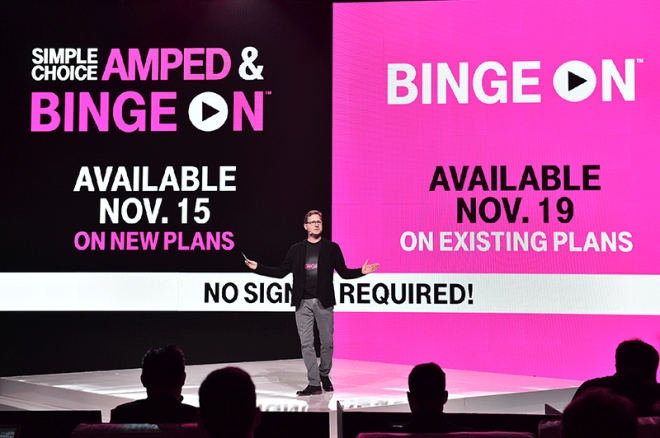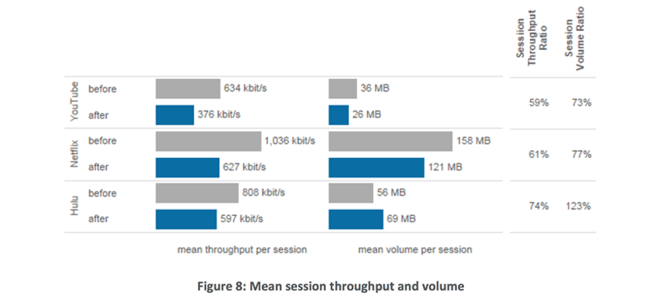New Binge On report shows more video consumption without increased T-Mobile network load
Consulting firm P3 Group today released a report on Binge On that is the result many weeks of observing the usage of 1,000 T-Mobile customers. These users installed an app from P3 that measured their smartphone usage, including data speeds.
During its study, P3 Group found that with Binge On, the bandwidth allotted to video content — streamed or downloaded — was around 1.5Mbps, echoing the findings of the EFF. However, P3 says that apart from net neutrality concerns, the bandwidth limitation actually has positive effects. With Binge On, customers spend more time watching more video, video services get more content in front of users, and T-Mobile attracts customers and can better fight network congestion, says P3.
The P3 Group’s study measured the amount of data used by particular apps before and after Binge On’s introduction. With Binge On enabled, P3 found that the average amount of data used for each YouTube and Netflix session fell quite a bit, but that Hulu usage went up so much that the average session actually used more data with Binge On. However, Hulu uses quite a bit less data than Netflix. P3 also found that T-Mobile customers launched YouTube and Hulu more with Binge On, but that they launched Netflix about as often as before. Once in the app, though, the average time that consumers used the apps increased across the board.
P3 Group also took a look at other apps that are affected by Binge On. For example, social media apps that offer video in addition to text and images — like Facebook, Instagram, and Tumblr — saw their average throughputs cut by Binge on as well. The same thing happened with several Android browsers and even games. With games, though, it’s likely that only the video ads were affected by Binge On, not the performance of the game itself.
In the end, P3 Group found that Binge On enabled its users to use watch video more often and for longer stretches of time. Meanwhile, Binge On has enabled T-Mobile to stream more video to its users without increasing the load on its network, and actually decreasing the load in some instances. During the pre-Binge On portion of the study, the users consumed an average of 83MB per sessions across Netflix, Hulu, YouTube, but that number fell to 72MB with Binge On enabled.
While today’s P3 Group report does reinforce the EFF’s previous study that showed that Binge On limited throughput speeds for video to around 1.5Mbps, it also shows that the service appears to be doing what T-Mobile wants. That is, enabling customers to stream more video while minimizing the impact on T-Mobile’s network. T-Mo has to be satisfied with the results of this report, especially with all of the controversy surrounding Binge On lately. There are still criticisms about Binge On and whether it should be opt-in or opt-out, though. We’ll have to wait and see if T-Mobile has another response to those criticisms or if they’ll leave it at John Legere’s open letter.


